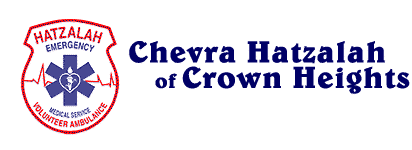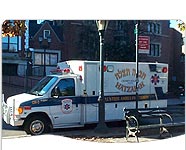Winter Preparedness: Winter Driving Tips

Winter Driving Tips
The leading cause of death during winter storms is transportation accidents.
Preparing your vehicle for the winter season and knowing how to react
if stranded or lost on the road are the keys to safe winter driving.
BEFORE
Have a mechanic check the following items on your car.
- Battery
- Antifreeze
- Wipers and windshield washer fluid
- Ignition system
- Thermostat
- Lights
- Flashing hazard lights
- Exhaust system
- Heater
- Brakes
- Defroster
- Oil level (if necessary, replace existing oil with a winter grade
oil or the SAE 10w/30 weight variety)
Install good winter tires.
Make sure the tires have adequate tread. All-weather radials are usually
adequate for most winter conditions. However, some jurisdictions require
that to drive on their roads, vehicles must be equipped with chains or
snow tires with studs.
Keep a windshield scraper and small broom for ice and snow removal.
Maintain at least a half tank of gas during the winter season.
Plan long trips carefully.
Listen to the radio or call the state highway patrol for the latest road
conditions. Always travel during daylight and, if possible, take at least
one other person.
If you must go out during a winter storm, use public transportation.
Dress warmly.
Wear layers of loose-fitting, layered, lightweight clothing.
Carry food and water.
Store a supply of high energy "munchies" and several bottles of water.
Contact your local emergency management office or American Red Cross
chapter for more information on winter driving.
Winter Car Kit
Keep these items in your car:
- Flashlights with extra batteries
- First aid kit with pocket knife
- Necessary medications
- Several blankets
- Sleeping bags
- Extra newspapers for insulation
- Plastic bags (for sanitation)
- Matches
- Extra set of mittens, socks, and a wool cap
- Rain gear and extra clothes
- Small sack of sand for generating traction under wheels
- Small shovel
- Small tools (pliers, wrench, screwdriver)
- Booster cables
- Set of tire chains or traction mats
- Cards, games, and puzzles
- Brightly colored cloth to use as a flag
- Canned fruit and nuts
- Nonelectric can opener
- Bottled water
DURING
IF TRAPPED IN CAR DURING A BLIZZARD
Stay in the car.
Do not leave the car to search for assistance unless help is visible within
100 yards. You may become disoriented and lost is blowing and drifting
snow.
Display a trouble sign.
Hang a brightly colored cloth on the radio antenna and raise the hood.
Occasionally run engine to keep warm.
Turn on the car's engine for about 10 minutes each hour. Run the heater
when the car is running. Also, turn on the car's dome light when the car
is running.
Beware of carbon monoxide poisoning. Keep the exhaust pipe clear
of snow, and open a downwind window slightly for ventilation.
Watch for signs of frostbite and hypothermia.
Do minor exercises to keep up circulation.
Clap hands and move arms and legs occasionally. Try not to stay in one
position for too long. If more than one person is in the car, take turns
sleeping.
For warmth, huddle together.
Use newspapers, maps, and even the removable car mats for added insulation.
Avoid overexertion.
Cold weather puts an added strain on the heart. Unaccustomed exercise
such as shoveling snow or pushing a car can bring on a heart attack or
make other medical conditions worse. Be aware of symptoms of dehydration.
Wind Chill
"Wind chill" is a calculation of how cold it feels outside when the
effects of temperature and wind speed are combined. A strong wind combined
with a temperature of just below freezing can have the same effect as
a still air temperature about 35 degrees colder.
Winter Storm Watches and Warnings
A winter storm watch indicates that severe winter weather may affect your
area. A winter storm warning indicates that severe winter weather conditions
are definitely on the way.
A blizzard warning means that large amounts of falling or blowing snow
and sustained winds of at least 35 miles per hour are expected for several
hours.
Frostbite and Hypothermia
Frostbite is a severe reaction to cold exposure that can permanently damage
its victims. A loss of feeling and a white or pale appearance in fingers,
toes, or nose and ear lobes are symptoms of frostbite.
Hypothermia is a condition brought on when the body temperature drops
to less than 90 degrees Fahrenheit. Symptoms of hypothermia include uncontrollable
shivering, slow speech, memory lapses, frequent stumbling, drowsiness,
and exhaustion.
If frostbite or hypothermia is suspected, begin warming the person slowly
and seek immediate medical assistance. Warm the person's trunk first.
Use your own body heat to help. Arms and legs should be warmed last because
stimulation of the limbs can drive cold blood toward the heart and lead
to heart failure.
Put person in dry clothing and wrap their entire body in a blanket.
Never give a frostbite or hypothermia victim something with caffeine
in it (like coffee or tea) or alcohol. Caffeine, a stimulant, can cause
the heart to beat faster and hasten the effects the cold has on the body.
Alcohol, a depressant, can slow the heart and also hasten the ill effects
of cold body temperatures.









